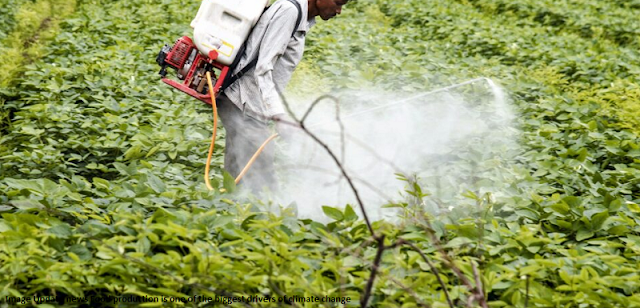News Food
The food that ends up on our plates travels a great distance and goes through a number of changes, from production to processing to distribution to consumption. An multinational research team has now created digital maps that show the pressures the world's food system is putting on the environment and climate.
The Norwegian University of Science and Technology's Daniel Moran, a study co-author, argued that the food system is the greatest threat to biological variety and one of the largest contributors to the climate catastrophe (NTNU).
"There are countless types of food on the globe, as well as numerous production methods. The environmental effects are numerous and challenging to quantify. Understanding the negative effects will help us produce food that is more environmentally friendly. By doing this, we can safeguard the ecosystem and ensure that there is enough food for everyone on the planet.
Taking into account the primary environmental pressures that food production places on the environment, such as CO2 emissions, water consumption, pollution, and habitat destruction, scientists have gathered data on 99 percent of all food production in water and on land recorded in 2017. For the purpose of measuring the overall environmental impact, they have also followed the full "life cycle" of food, from the sowing of grain or birth of the piglet to the bread and bacon on the tables of consumers.
According to the data, five nations—China, India, the United States, Brazil, and Pakistan—account for about half of the environmental damage caused by food production worldwide. Since they are typically developing nations with acute food shortages and widespread poverty, the countries with the lowest environmental footprints have not been "crowned" in the current study.
Scientists estimate that only 1% of the planet's land surface is used to generate 90% of the world's food. However, the environmental impact of food producing operations varies widely depending on the specific locations where they occur. Moran stated: "The differences in the production footprint of the same product across different countries astounded us. Locally grown food is typically the most environmentally friendly option.
"A food item may be sustainable if it is made in one country but not another. For instance, it was discovered that American soy farming is twice as environmentally friendly than Indian soy production.
The researchers came to the conclusion that there is no single diet that can be recommended as the most environmentally friendly because it varies widely from nation to nation. They also cautioned individuals to strike a balance between their desire for self-sufficiency in all food types and the most environmentally friendly production practises, even though local food is frequently sustainable.
The research is presented in the Nature Sustainability journal.


Click Next Article (4 Left to get CODE)
Post a Comment